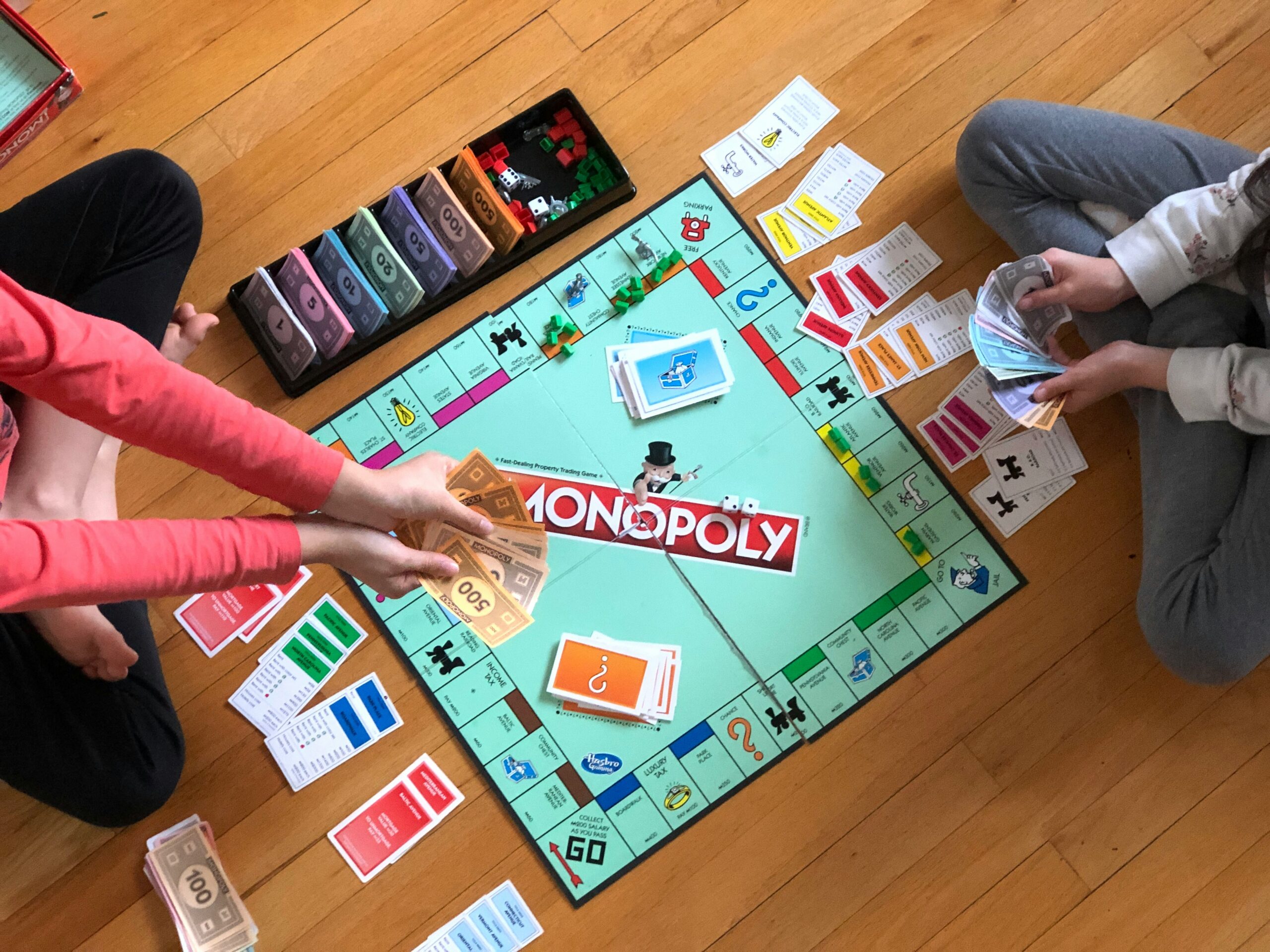Strategy board games have long been a favorite pastime for many, offering hours of entertainment and intellectual challenge. From classics that have stood the test of time to modern masterpieces that have redefined the genre, the world of strategy board games is vast and diverse. In this article, we’ll explore some of the best strategy board games available today, delving into their unique features, gameplay mechanics, and what makes them stand out. Whether you’re a seasoned strategist or a newcomer looking to dive into the world of strategy games, there’s something here for everyone.
Top Picks for the Best Strategy Board Games
Chess
Chess is perhaps the most well-known and enduring strategy board game. Originating in India over a thousand years ago, it has become a global phenomenon, played and studied by millions. The game is played on an 8×8 grid with each player controlling an army of 16 pieces, including pawns, knights, bishops, rooks, a queen, and a king. The objective is to checkmate the opponent’s king, meaning it is in a position to be captured with no escape.
Chess is renowned for its deep strategic elements and the need for players to think several moves ahead. It has a rich history of opening theories, tactical combinations, and endgame techniques. Chess is also a highly competitive game, with a well-established ranking system and professional tournaments held worldwide.
Go
Go is another ancient strategy game, originating in China over 2,500 years ago. It is played on a 19×19 grid, although smaller boards (13×13 and 9×9) are also popular for beginners. Players take turns placing black or white stones on the intersections of the board with the goal of controlling the largest area of territory.
Go is celebrated for its simplicity in rules but complexity in strategy. The game emphasizes balance and requires players to manage multiple areas of the board simultaneously. The strategies in Go are vast, with thousands of possible moves at each turn, making it a game of profound depth and beauty.
Settlers of Catan
Settlers of Catan, often simply called Catan, is a modern classic that has introduced many to the world of strategy board games. Created by Klaus Teuber and first published in 1995, Catan is a game of resource management and negotiation. Players assume the roles of settlers trying to build and develop holdings while trading and acquiring resources.
The game is played on a modular hex board, ensuring a different layout each time. Players collect resources such as wood, brick, wheat, ore, and sheep to build roads, settlements, and cities, aiming to reach a set number of victory points. Catan is known for its social aspect, requiring players to negotiate trades and manage resource scarcity effectively.
Ticket to Ride
Ticket to Ride, designed by Alan R. Moon and released in 2004, is a railway-themed game where players compete to build the most extensive rail network across a map. Each player has a set of destination tickets, which they must connect by claiming railway routes on the board using colored train cards.
The game combines route planning and resource management with strategic decision-making. Players must balance the risk of drawing new tickets with the potential reward of completing long routes. Ticket to Ride is praised for its accessibility, making it a great entry point for newcomers to strategy games.
Pandemic
Pandemic, designed by Matt Leacock and released in 2008, is a cooperative strategy game where players work together to stop global outbreaks of diseases. Each player assumes a unique role with special abilities, such as the Medic or the Scientist, and must collaborate to find cures and prevent the spread of infections.
The game is played on a world map, with disease cubes representing outbreaks in various cities. Players draw cards that can either help them find cures or trigger further outbreaks. Pandemic is known for its tense gameplay and the necessity for teamwork and strategic planning.
Carcassonne
Carcassonne, named after the medieval fortified town in France, is a tile-placement game designed by Klaus-Jürgen Wrede and released in 2000. Players draw and place tiles to build a landscape of cities, roads, fields, and monasteries. Each tile must be placed adjacent to those already on the board, and players can claim features to score points.
Carcassonne’s appeal lies in its simple rules and deep strategic options. Players must decide the best way to place their tiles and how to use their limited supply of meeples (game pieces) to maximize their score. The game also features numerous expansions, adding new elements and increasing replayability.
Risk
Risk, created by Albert Lamorisse and first published in 1957, is a game of global domination. Players control armies and attempt to conquer territories on a world map, with the goal of eliminating opponents or achieving specific objectives.
The game involves strategic planning, negotiation, and tactical combat. Players must balance offense and defense, manage reinforcements, and form alliances. Risk is known for its high level of player interaction and the potential for dramatic comebacks and betrayals.
7 Wonders
7 Wonders, designed by Antoine Bauza and released in 2010, is a card-drafting game set in the ancient world. Players develop their civilization by constructing buildings, wonders, and advancing in science, commerce, and military.
The game is played over three ages, with players selecting cards that provide resources, points, or other benefits. Each card drafted can impact the player’s strategy and the overall game dynamics. 7 Wonders is praised for its depth, replayability, and the variety of strategies it allows.
Terra Mystica
Terra Mystica, designed by Jens Drögemüller and Helge Ostertag and released in 2012, is a complex strategy game where players control one of 14 different fantasy factions, each with unique abilities. The game involves terraforming the land, building structures, and expanding one’s territory.
The game is known for its intricate mechanics, including resource management, area control, and engine building. Players must carefully plan their actions and adapt to the evolving board state. Terra Mystica is highly regarded for its depth and strategic richness.
Agricola
Agricola, designed by Uwe Rosenberg and released in 2007, is a farming-themed game where players manage a family farm, planting crops, raising animals, and expanding their homestead. Each player starts with a small farm and a couple of family members, using actions to gather resources and improve their farm.
The game involves careful planning and resource management, as players must balance immediate needs with long-term goals. Agricola is noted for its complexity and the variety of strategies it supports, making it a favorite among serious gamers.
Scythe
Scythe, designed by Jamey Stegmaier and released in 2016, is a game set in an alternate-history 1920s Europe. Players control factions vying for control of territories, resources, and power. The game combines elements of area control, resource management, and engine building.
Scythe is known for its beautiful artwork, rich thematic elements, and deep strategic gameplay. Players must balance military might with economic development and strategic positioning. The game’s multiple paths to victory ensure high replayability.
Twilight Struggle
Twilight Struggle, designed by Ananda Gupta and Jason Matthews and released in 2005, is a two-player game that simulates the geopolitical struggle between the United States and the Soviet Union during the Cold War. The game is played on a world map, with players using cards to influence regions, conduct operations, and advance their agendas.
Twilight Struggle is celebrated for its historical accuracy, depth of strategy, and intense gameplay. Each decision can have far-reaching consequences, and players must manage their resources and influence carefully to achieve victory.
Dominion
Dominion, designed by Donald X. Vaccarino and released in 2008, is a deck-building game where players start with a small deck of cards and gradually acquire more powerful cards to improve their deck. The goal is to accumulate victory points by building an efficient deck and strategically using the available cards.
The game is known for its innovative mechanics, which have inspired many other deck-building games. Dominion’s simple rules and deep strategy make it a favorite among gamers of all skill levels. The numerous expansions add variety and replayability.
Through the Ages: A Story of Civilization
Through the Ages, designed by Vlaada Chvátil and released in 2006, is a civilization-building game where players guide their society from ancient times to the modern era. The game involves managing resources, developing technologies, building wonders, and leading military and political activities.
Through the Ages is renowned for its depth and complexity, offering a rich and rewarding gameplay experience. Players must balance various aspects of their civilization, making strategic decisions that will shape the course of their society’s development.
Puerto Rico
Puerto Rico, designed by Andreas Seyfarth and released in 2002, is a game of economic development set in colonial Puerto Rico. Players manage plantations, construct buildings, and ship goods to Europe, aiming to achieve the highest prosperity.
The game involves selecting roles that determine actions for all players, such as growing crops, building structures, and shipping goods. Puerto Rico is known for its strategic depth, player interaction, and replayability. It has received numerous accolades and remains a staple in the board gaming community.
Power Grid
Power Grid, designed by Friedemann Friese and released in 2004, is an economic game where players compete to build and power a network of cities. The game involves acquiring power plants, buying resources, and expanding the power grid.
Power Grid combines auction mechanics with resource management and strategic planning. Players must balance their investments and optimize their network to generate the most income. The game is praised for its challenging gameplay and strategic depth.
Eclipse
Eclipse, designed by Touko Tahkokallio and released in 2011, is a space-themed 4X game (explore, expand, exploit, exterminate) where players control a civilization vying for dominance in the galaxy. The game involves exploration, resource management, technological advancement, and combat.
Eclipse is known for its epic scale and strategic complexity. Players must carefully manage their economy, research technologies, and build a fleet to achieve their objectives. The game’s modular board and variety of factions add to its replayability.
Mage Knight
Mage Knight, designed by Vlaada Chvátil and released in 2011, is a fantasy-themed game that combines elements of deck-building, role-playing, and exploration. Players control powerful mage knights who explore a world filled with dungeons, cities, and enemies.
The game involves strategic planning, resource management, and tactical combat. Mage Knight is known for its depth and complexity, offering a solo and cooperative mode as well as competitive play. It is highly regarded for its rich thematic elements and challenging gameplay.
Terraforming Mars
Terraforming Mars, designed by Jacob Fryxelius and released in 2016, is a game where players take on the roles of corporations working to terraform the planet Mars. The game involves managing resources, playing project cards, and advancing terraforming milestones.
Terraforming Mars is celebrated for its thematic integration and strategic depth. Players must balance short-term gains with long-term objectives, managing their resources and card plays effectively. The game’s variety of project cards and corporations ensure high replayability.
Star Realms
Star Realms, designed by Robert Dougherty and Darwin Kastle and released in 2014, is a deck-building game set in space. Players build their deck by acquiring ships and bases, aiming to reduce their opponent’s authority to zero.
The game is known for its fast-paced gameplay, strategic depth, and easy-to-learn mechanics. Star Realms is highly portable and offers a variety of expansions that add new strategies and challenges.
Keyflower
Keyflower, designed by Richard Breese and Sebastian Bleasdale and released in 2012, is a game of village building and worker placement. Players use their workers to bid on tiles, gain resources, and upgrade their village.
The game is noted for its unique auction mechanic and deep strategic options. Players must manage their workers and resources carefully to optimize their village and score points. Keyflower is praised for its replayability and strategic depth.
Blood Rage
Blood Rage, designed by Eric M. Lang and released in 2015, is a Viking-themed game of area control and combat. Players control Viking clans vying for glory in Ragnarok, drafting cards to gain advantages and deploying their forces to control territories.
The game combines card drafting with tactical combat and strategic planning. Blood Rage is known for its beautiful miniatures, thematic richness, and dynamic gameplay. Players must balance aggression with strategic positioning to achieve victory.
Brass: Birmingham
Brass: Birmingham, designed by Martin Wallace, Gavin Brown, and Matt Tolman and released in 2018, is an economic strategy game set during the Industrial Revolution in England. Players build and develop industries, establish networks, and navigate the market demands of coal, iron, and beer.
The game is known for its deep economic mechanics and strategic planning. Players must balance investments and optimize their network to generate income and score points. Brass: Birmingham is praised for its complexity and rewarding gameplay.
Concordia
Concordia, designed by Mac Gerdts and released in 2013, is a game of economic development and trade set in the Roman Empire. Players expand their trade networks, acquire resources, and build cities, aiming to achieve the highest prosperity.
The game involves strategic planning, resource management, and card play. Concordia is known for its elegant mechanics and deep strategic options. Players must carefully plan their actions and manage their resources to achieve victory.
Anachrony
Anachrony, designed by David Turczi, Richard Amann, and Viktor Peter and released in 2017, is a game of time travel and resource management. Players control factions in a post-apocalyptic world, using time travel to gain resources and achieve their objectives.
The game combines worker placement with a unique time travel mechanic, where players can borrow resources from their future selves. Anachrony is celebrated for its thematic richness, strategic depth, and innovative mechanics.
Gloomhaven
Gloomhaven, designed by Isaac Childres and released in 2017, is a cooperative dungeon-crawling game where players take on the roles of adventurers exploring a dark and dangerous world. The game involves tactical combat, resource management, and a branching narrative.
Gloomhaven is known for its deep and immersive gameplay, with a campaign that evolves based on player decisions. The game’s modular board, variety of characters, and wealth of content ensure a highly replayable and engaging experience.
Great Western Trail
Great Western Trail, designed by Alexander Pfister and released in 2016, is a game of cattle herding and economic development in the American West. Players move their cattle along a trail, delivering them to market while building structures and managing their herd.
The game combines deck-building with route planning and strategic decision-making. Great Western Trail is praised for its depth, replayability, and thematic integration. Players must balance multiple aspects of their strategy to achieve victory.
Spirit Island
Spirit Island, designed by R. Eric Reuss and released in 2017, is a cooperative game where players take on the roles of spirits defending their island from colonizing invaders. The game involves managing powers, spreading presence, and repelling invaders.
Spirit Island is known for its deep strategic gameplay and rich thematic elements. Players must work together to plan their actions and adapt to the evolving threats. The game’s variety of spirits and scenarios ensure high replayability and challenge.
Viticulture
Viticulture, designed by Jamey Stegmaier and Alan Stone and released in 2013, is a game of wine production and management. Players manage a vineyard, planting vines, harvesting grapes, and producing wine to fulfill orders and achieve prosperity.
The game involves worker placement, resource management, and strategic planning. Viticulture is praised for its thematic integration, elegant mechanics, and strategic depth. Players must carefully plan their actions and manage their resources to succeed.
The Castles of Burgundy
The Castles of Burgundy, designed by Stefan Feld and released in 2011, is a game of estate building in medieval France. Players acquire and place tiles to build their estate, managing resources and scoring points for completed areas.
The game involves strategic planning, tile placement, and resource management. The Castles of Burgundy is known for its depth, replayability, and engaging gameplay. Players must balance immediate needs with long-term goals to achieve victory.
Tigris & Euphrates
Tigris & Euphrates, designed by Reiner Knizia and released in 1997, is a game of civilization building in ancient Mesopotamia. Players place tiles to develop their civilization, managing conflicts and scoring points in multiple categories.
The game involves strategic placement, conflict resolution, and resource management. Tigris & Euphrates is celebrated for its depth, complexity, and strategic options. Players must balance their civilization’s growth and navigate conflicts to achieve victory.
Lords of Waterdeep
Lords of Waterdeep, designed by Peter Lee and Rodney Thompson and released in 2012, is a worker placement game set in the Dungeons & Dragons universe. Players control lords vying for power in the city of Waterdeep, completing quests and building structures.
The game involves strategic planning, resource management, and secret objectives. Lords of Waterdeep is known for its thematic richness and engaging gameplay. Players must carefully plan their actions and manage their resources to achieve their goals.
Clank! A Deck-Building Adventure
Clank!, designed by Paul Dennen and released in 2016, is a deck-building game with elements of exploration and dungeon crawling. Players build their deck to navigate a dungeon, acquire treasures, and avoid making too much noise (clank) to escape safely.
The game combines deck-building with strategic movement and risk management. Clank! is praised for its fun and engaging gameplay, thematic integration, and replayability. Players must balance their deck and manage their risk to achieve victory.
Root
Root, designed by Cole Wehrle and released in 2018, is an asymmetric game of woodland warfare and politics. Players control different factions, each with unique abilities and objectives, vying for control of the forest.
The game involves strategic planning, area control, and negotiation. Root is known for its deep and engaging gameplay, rich thematic elements, and variety of strategies. Players must navigate the complex interactions between factions to achieve victory.
Gaia Project
Gaia Project, designed by Jens Drögemüller and Helge Ostertag and released in 2017, is a spiritual successor to Terra Mystica. Players control factions colonizing a galaxy, managing resources, developing technologies, and expanding their territories.
The game involves strategic planning, resource management, and technological advancement. Gaia Project is praised for its depth, complexity, and strategic options. Players must carefully plan their actions and adapt to the evolving board state to achieve victory.
FAQ’s on the best strategy board games
What makes a strategy board game good?
A good strategy board game combines depth, replayability, and balanced gameplay. It should offer meaningful choices, require strategic planning, and provide opportunities for players to interact and influence each other’s decisions. The game should also be well-designed, with clear rules and engaging mechanics that keep players invested.
How do I choose the right strategy board game for me?
Consider your interests, the type of gameplay you enjoy, and the complexity you’re comfortable with. If you like competitive games with direct conflict, games like Risk or Blood Rage might appeal to you. If you prefer cooperative games, Pandemic or Spirit Island could be a good fit. Reading reviews and watching playthrough videos can also help you make an informed decision.
Are strategy board games suitable for beginners?
Yes, many strategy board games are accessible to beginners. Games like Ticket to Ride, Catan, and Carcassonne have simple rules and are great entry points.
Conclusion on the best strategy board games
the world of strategy board games is rich and diverse, offering something for every type of player. From timeless classics like Chess and Go to modern masterpieces like Terraforming Mars and Gloomhaven, these games provide endless hours of intellectual challenge and entertainment. Whether you enjoy competitive play, cooperative missions, or intricate resource management, there is a strategy board game that will captivate your interest and sharpen your strategic thinking. As you explore these games, you’ll find not only a great way to pass the time but also a rewarding experience that brings people together and stimulates the mind.








